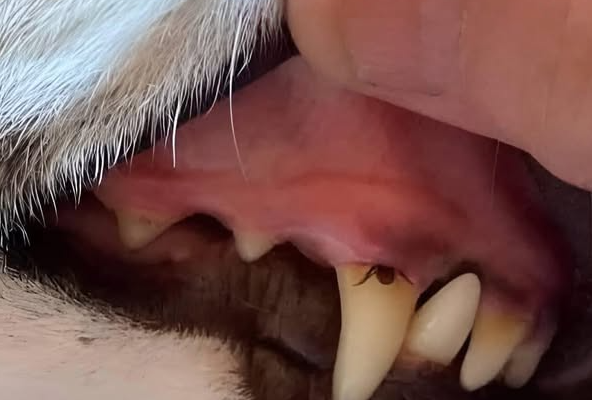how To Stay Thoroughly Protected From Ticks
Ticks are tiny but dangerous parasites that can transmit serious illnesses like Lyme disease, Rocky Mountain spotted fever, and ehrlichiosis. Their bites often go unnoticed until symptoms appear—by then, infection may already be underway. Whether you’re hiking through the woods, gardening in your backyard, or walking your dog through tall grass, taking proactive steps against ticks is crucial. Here’s a detailed 1000-word guide on how to stay thoroughly protected from these stealthy pests.
Understanding the Threat
Ticks are small arachnids that feed on the blood of animals and humans. They thrive in grassy, wooded, and humid environments, waiting patiently on vegetation until a host brushes by. Once attached, a tick can remain latched for days, feeding and potentially transmitting harmful pathogens.
Different species carry different diseases. The black-legged tick (also called the deer tick) is known for transmitting Lyme disease, while the American dog tick can spread Rocky Mountain spotted fever. Because these illnesses can cause chronic fatigue, joint pain, fever, and neurological issues, prevention should be your first defense.
1. Dress Smart: Your First Line of Defense
Your clothing can serve as a physical barrier between you and ticks. Here’s how to outfit yourself properly:
-
Cover up completely. When in tick-prone areas, wear long-sleeved shirts and long pants. Tuck your pants into your socks or boots to prevent ticks from crawling up your legs.
-
Choose light-colored fabrics. Ticks are dark and small, so lighter clothing makes them easier to spot before they attach.
-
Opt for smooth materials. Ticks cling more easily to coarse fabrics like wool. Synthetic or tightly woven materials make it harder for them to grab hold.
-
Treat your clothes with permethrin. This insecticide, available in sprays or pre-treated garments, kills ticks on contact. Treated clothing can remain effective through several washes.
A little preparation with the right gear can drastically reduce your risk before you even step outdoors.
2. Use Effective Tick Repellents
Repellents are another crucial layer of protection. The Centers for Disease Control and Prevention (CDC) recommends several active ingredients proven to deter ticks:
-
DEET (20–30%) – Long-lasting and effective on both skin and clothing. Reapply as directed.
-
Picaridin (20%) – Comparable protection to DEET but less greasy and with a milder scent.
-
Oil of Lemon Eucalyptus (30–40%) – A natural alternative derived from the lemon eucalyptus tree; effective for up to six hours.
-
IR3535 – Common in European repellents, safe for children and sensitive skin.
-
Permethrin – Used only on clothing and gear (never directly on skin).
Apply repellents generously to exposed skin, shoes, and outdoor gear such as backpacks. Pay attention to ankles, wrists, and behind the knees—ticks tend to target these thin-skinned, hard-to-see areas.
3. Know Where Ticks Hide
Understanding tick habitats can help you avoid unnecessary exposure:
-
High-risk zones: Wooded trails, leaf piles, tall grass, and shaded, humid areas.
-
Low-risk zones: Open, sunny lawns and paved or gravel paths.
-
At home: Ticks often linger in overgrown grass, woodpiles, and along fences or stone walls where small mammals pass through.
Whenever possible, stay on the center of trails and avoid brushing against vegetation. Keep pets on a leash and discourage them from wandering into thick underbrush.
4. Protect Your Yard
Many tick bites occur right at home. Luckily, with some maintenance, you can create a tick-safe yard:
-
Keep grass short. Mow regularly and trim overhanging branches to reduce shade and humidity.
-
Remove leaf litter. Rake leaves and clear brush, especially at the edges of your yard.
-
Create a barrier. Lay a 3-foot wide strip of wood chips or gravel between lawns and wooded areas to discourage tick migration.
-
Stack wood neatly. Keep firewood dry and off the ground to reduce rodent hiding spots.
-
Discourage wildlife. Use fencing to keep deer out—ticks often hitch a ride on them.
If you live in a heavily infested area, consider hiring a professional pest control service for seasonal tick treatments.
5. Protect Your Pets
Dogs and cats are frequent tick targets and can carry them indoors, putting your whole household at risk. To protect your furry companions:
-
Use veterinarian-approved tick preventives such as oral medications, topical treatments, or tick collars.
-
Check your pet’s fur daily after outdoor play, focusing on ears, armpits, paws, and under the collar.
-
Keep pets away from wooded or brushy areas.
-
Vacuum regularly indoors, especially where your pet sleeps.
If you find a tick attached to your pet, remove it promptly with tweezers and monitor for symptoms like lethargy, fever, or limping—potential signs of infection.
6. Perform Daily Tick Checks
Ticks are small, and their bites are painless, so careful self-inspection is key—especially after outdoor activity. After coming indoors:
-
Shower within two hours to wash off any unattached ticks.
-
Conduct a full-body check using a mirror or a partner to inspect:
-
Behind knees and ears
-
Around the waistline
-
In the belly button
-
Between legs
-
Along the hairline and scalp
-
-
Check your clothing, too—ticks can linger there for hours.
Throw clothes in a dryer on high heat for 10 minutes to kill any hidden ticks. Simply washing them may not be enough.
7. How to Remove a Tick Safely
If you find an attached tick, remove it immediately—early removal greatly reduces infection risk. Follow these steps:
-
Use fine-tipped tweezers to grasp the tick as close to the skin’s surface as possible.
-
Pull upward steadily without twisting or jerking to avoid leaving mouthparts embedded.
-
After removal, clean the area with rubbing alcohol, soap, and water.
-
Dispose of the tick by submerging it in alcohol, sealing it in a bag, or flushing it down the toilet.
-
Do not crush it with your fingers.
If you experience rash, fever, fatigue, or joint pain within several weeks, see a doctor and mention the tick bite. Lyme disease and similar infections are most treatable when caught early.
8. Strengthen Your Awareness
Staying protected from ticks isn’t just about repellents and clothing—it’s also about awareness. Learn to identify local tick species and their activity seasons. In most U.S. regions, tick activity peaks during spring and summer, but in warmer climates, they can be active year-round.
Local health departments often post alerts or maps showing tick prevalence and disease cases. Staying informed helps you adjust precautions based on risk levels.
9. Consider Preventive Landscaping Treatments
In heavily infested regions, additional preventive measures can make a difference:
-
Apply tick control products (like pyrethrin-based sprays) to vegetation around your yard.
-
Use tick tubes, which target the small rodents that ticks feed on. These cotton-filled tubes are treated with permethrin and reduce tick populations effectively.
-
Schedule professional tick management during spring and summer for consistent protection.
Final Thoughts
Ticks may be tiny, but their impact on health can be enormous. Fortunately, with smart prevention—proper clothing, repellents, tick checks, and pet protection—you can minimize your risk almost completely. Awareness and diligence are your best tools. Every walk through the woods or backyard adventure can stay enjoyable and safe when you take the right precautions.

